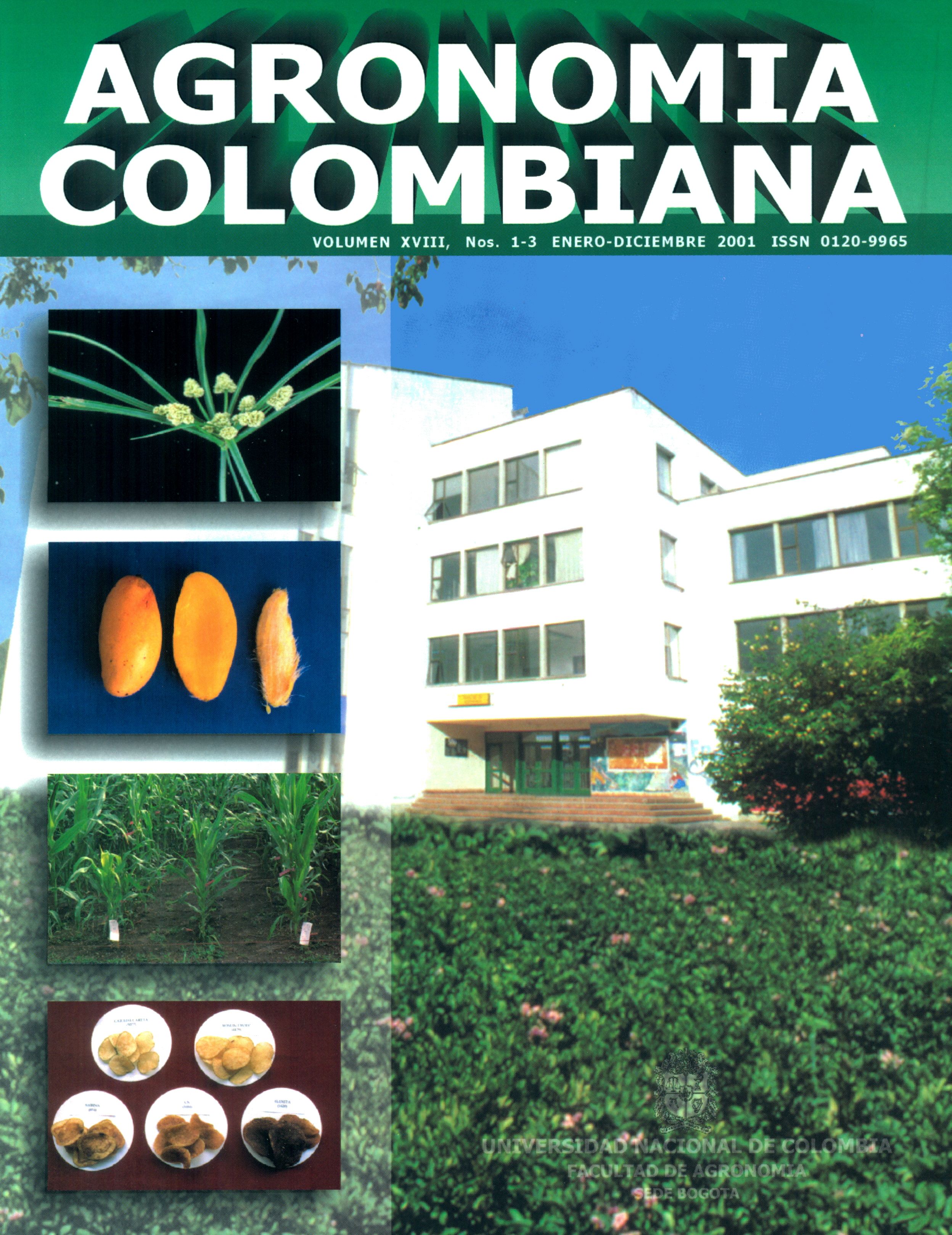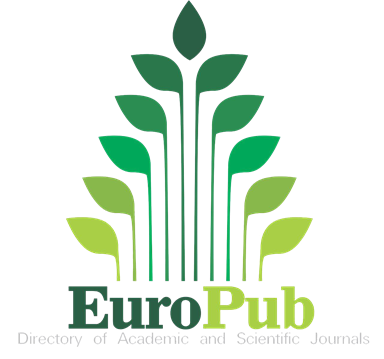Evaluación de dos tipos de esquejes en la producción de semilla pre básica de papa criolla (Solanum phureja Juz et. Buk) variedad "yema de huevo"
Effect for two types of explant for prebasic seed production of native potato (Solanum phureja luz et. Buk) "Yema de Huevo"
Keywords:
densidades, tasa de multiplicación, fisiología vegetal, competencia (es)densities, multiplication rate, in vitro propagation, plant physiology, competition (en)
Downloads
utiliza, como herramienta, la técnica de micropropagación, la
cual garantiza, mediante un adecuado proceso, alta sanidad de los tubérculos semilla y una rápida multiplicación. En la papa diploide Solanum phureja cultivar "Yema de huevo", la multiplicación "in vitro" fue desarrollada exitosamente y, por lo tanto, el paso siguiente, la producción de esquejes en casa de malla (semilla prebásica) requiere de los estudios necesarios para optimizar esta fase. El presente trabajo tuvo como objetivo conocer la densidad y el tipo de esqueje óptimos para desarrollar la producción de semilla prebásica en condiciones de casa malla. La investigación se realizó bajo un diseño completamente al azar, con arrreglo factorial (2x4), siendo el primer factor la distancia entre plantas y, el segundo, el tipo de explante utilizado. El experimento se realizó en casa de malla en la Estación San Jorge del Instituto Colombiano Agropecuario (ICA) a 2800 msnm. Se encontró que la distancia de 6 cm entre sitios de transplante optimiza la producción de semilla prebásica y la distancia de 9 cm optimiza la tasa de multiplicación. Los mejores explantes son los esquejes de tallo lateral.
pota toe seed production which guarantees, through an
adequate process, healthy seed tubers, and rapid multiplication. In the diploid potato Solanum phureja cultivar «yema de huevo» the multiplication «in vitro» was developed successfully. There fore the following step, the production of explants in greenhouse (prebasic seed), requires the studies to optimize this phase. This work was carried out establish to the density and the type of explants optimum, to develop the production of prebasic seed under greenhouse conditions. The trial was carried out following a completely randomized design, with factorial array (4x3). The first factor was the distance among plants and, the second, the type of explants. The experiment was carried out in the San Jorge Experimental Station greenhoused ofthe ICA to 2800 masl. It was found that a 6 cm distance between plants optimizes the production and a distance of 9 cm between plants, optimizes the multiplication rateo The best type of explants was the lateral steam.
How to Cite
APA
ACM
ACS
ABNT
Chicago
Harvard
IEEE
MLA
Turabian
Vancouver
Download Citation
Article abstract page views
Downloads
License
Copyright (c) 2001 Agronomía Colombiana

This work is licensed under a Creative Commons Attribution-NonCommercial-ShareAlike 4.0 International License.
© Centro Editorial de la Facultad de Ciencias Agrarias, Universidad Nacional de Colombia
Reproduction and quotation of material appearing in the journal is authorized provided the following are explicitly indicated: journal name, author(s) name, year, volume, issue and pages of the source. The ideas and observations recorded by the authors are their own and do not necessarily represent the views and policies of the Universidad Nacional de Colombia. Mention of products or commercial firms in the journal does not constitute a recommendation or endorsement on the part of the Universidad Nacional de Colombia; furthermore, the use of such products should comply with the product label recommendations.
The Creative Commons license used by Agronomia Colombiana journal is: Attribution - NonCommercial - ShareAlike (by-nc-sa)

Agronomia Colombiana by Centro Editorial of Facultad de Ciencias Agrarias, Universidad Nacional de Colombia is licensed under a Creative Commons Reconocimiento-NoComercial-CompartirIgual 4.0 Internacional License.
Creado a partir de la obra en http://revistas.unal.edu.co/index.php/agrocol/.




















